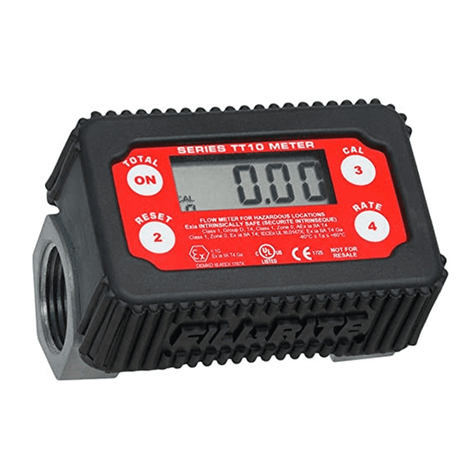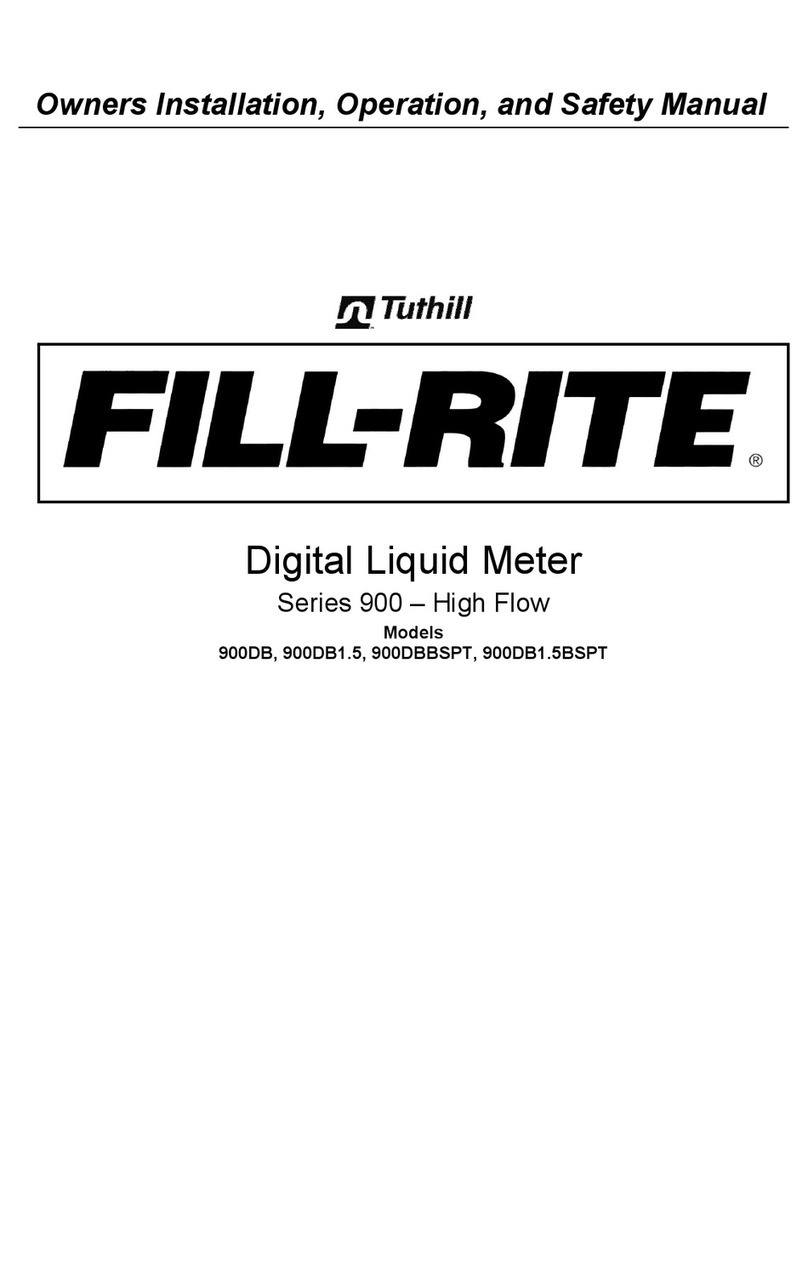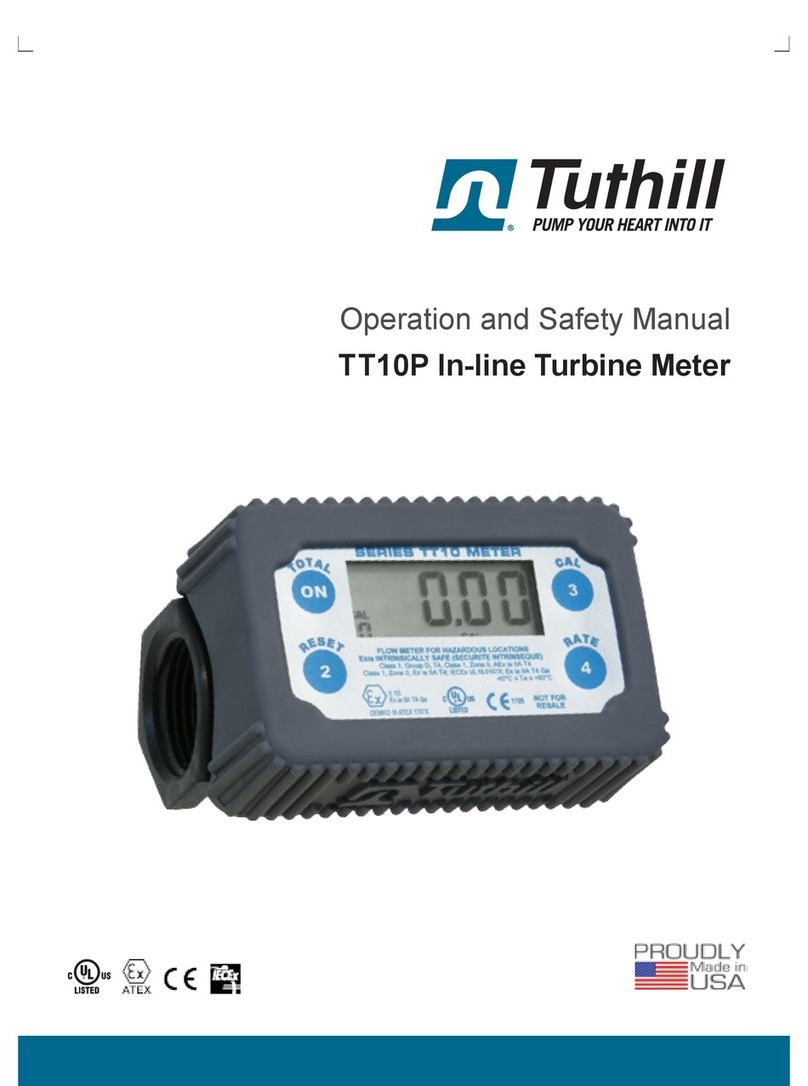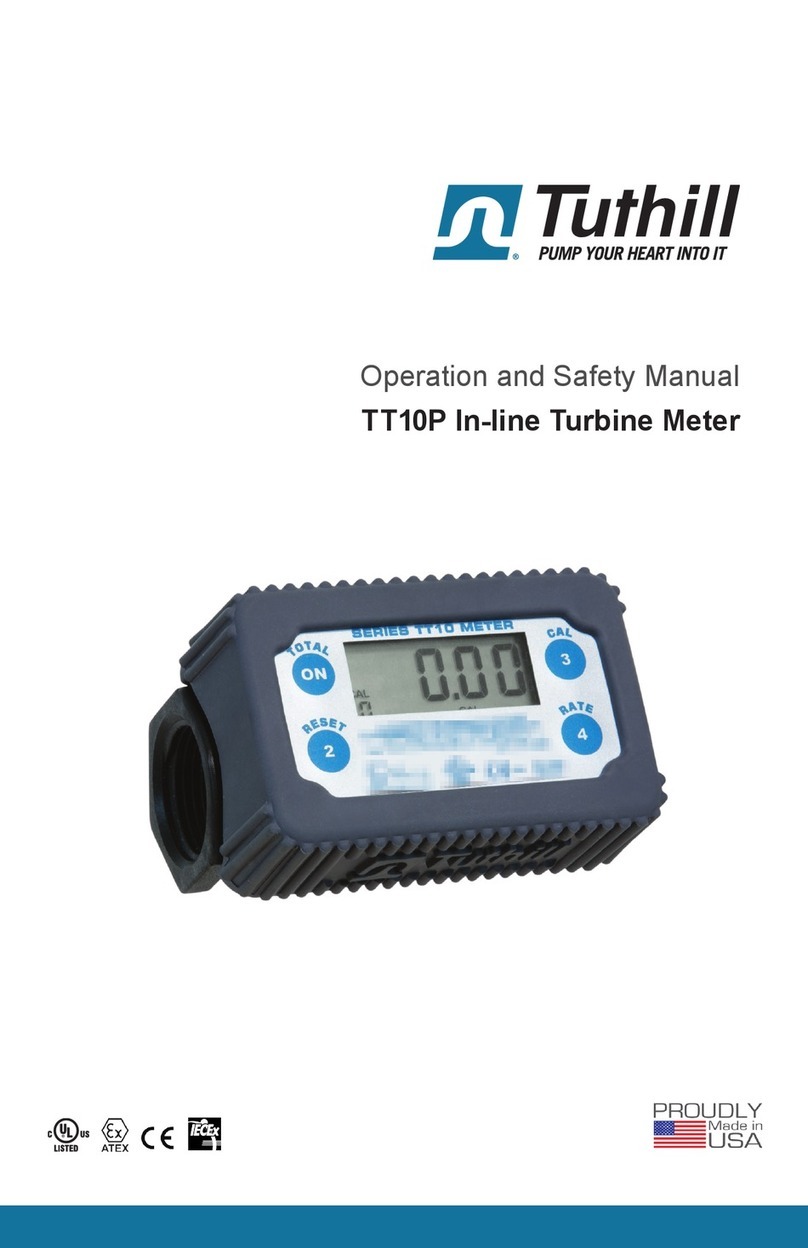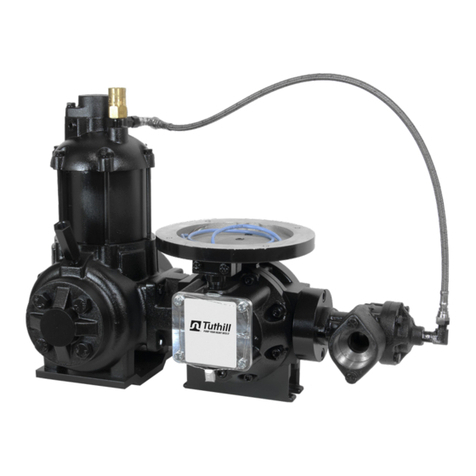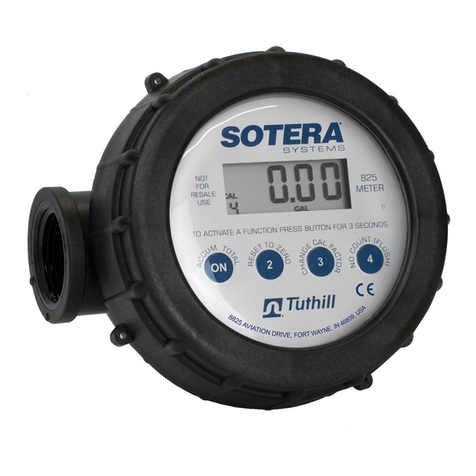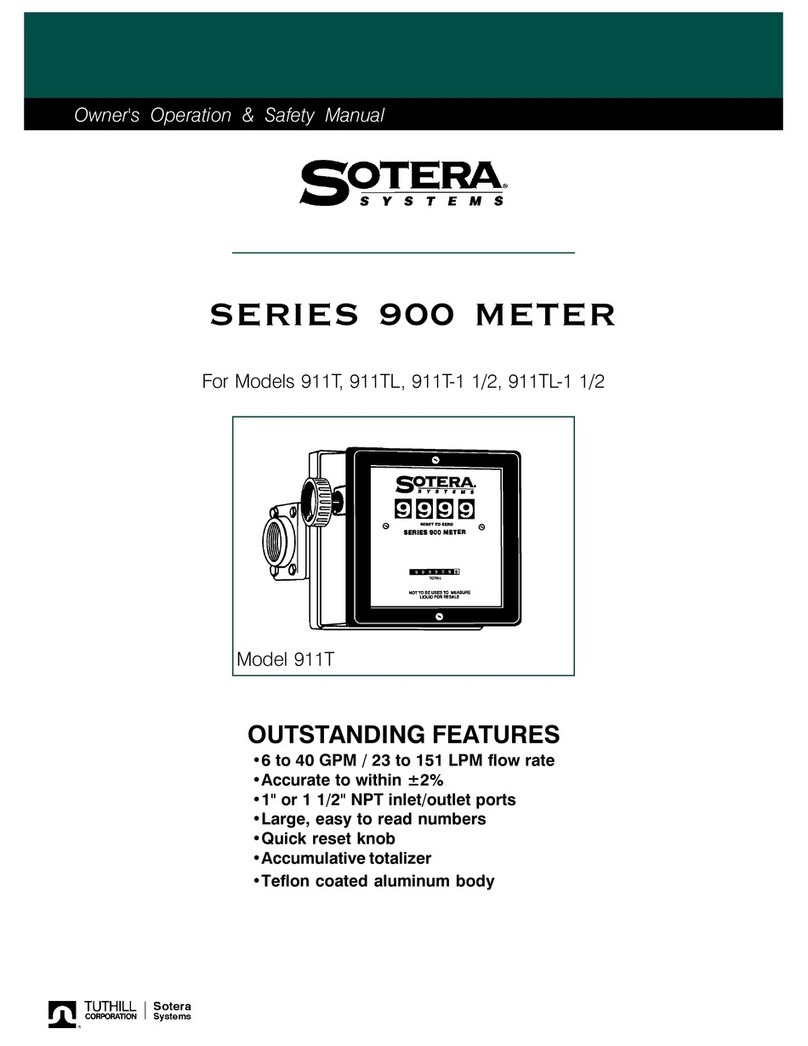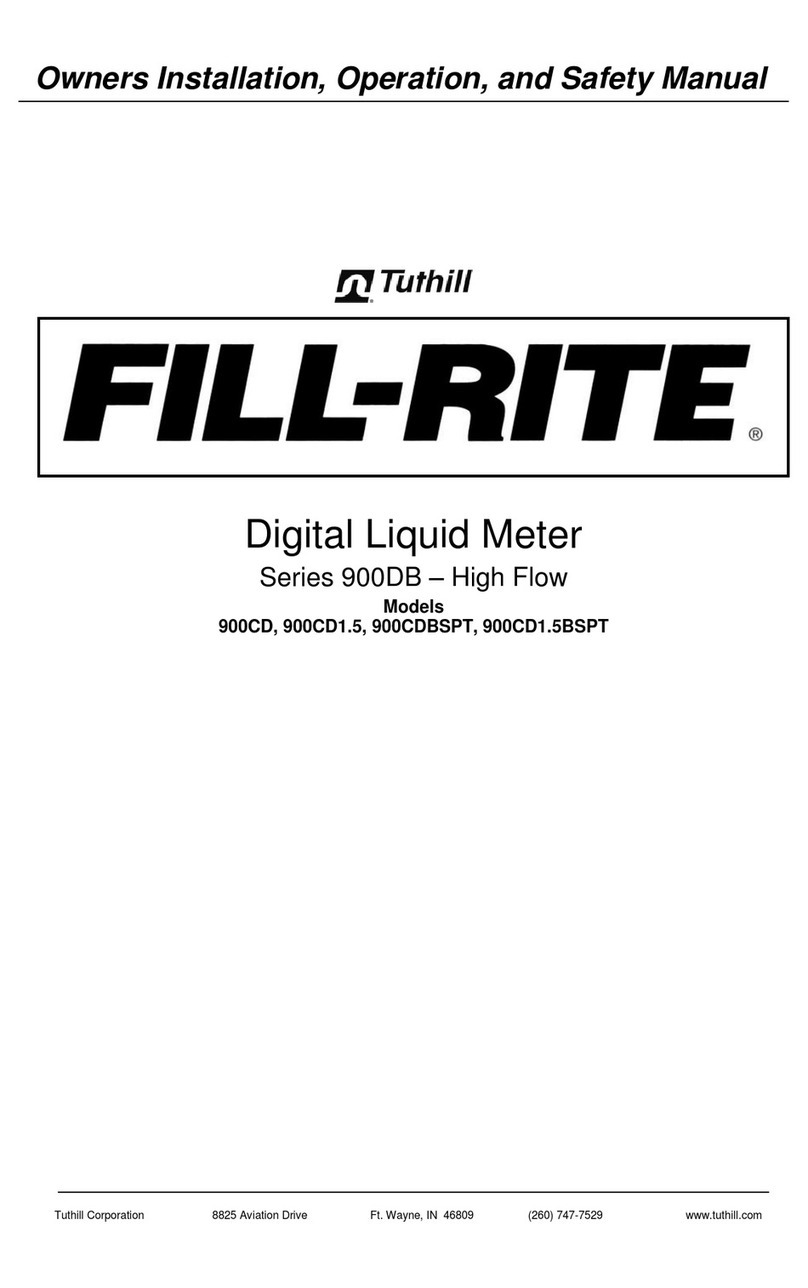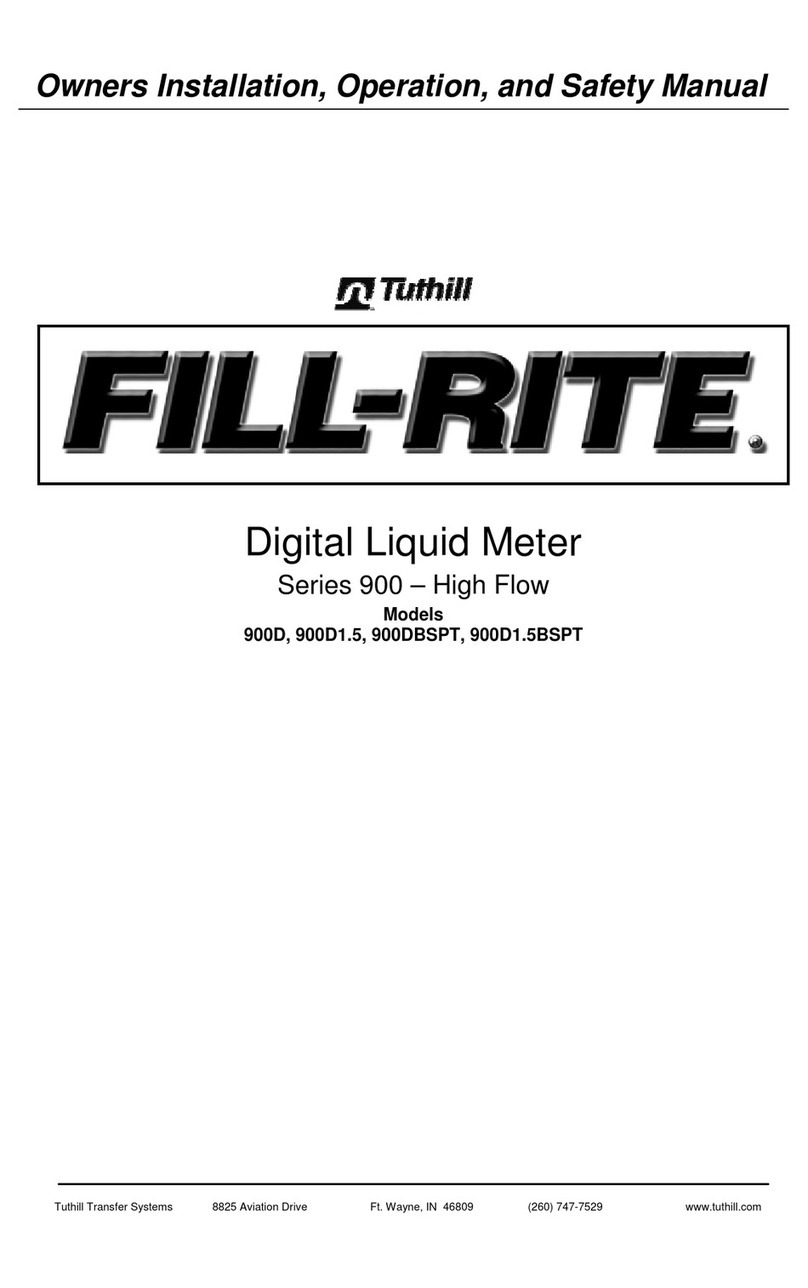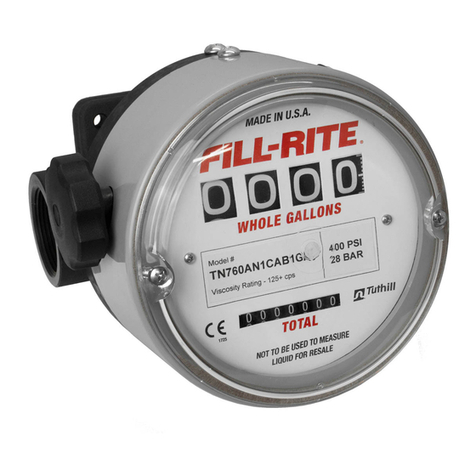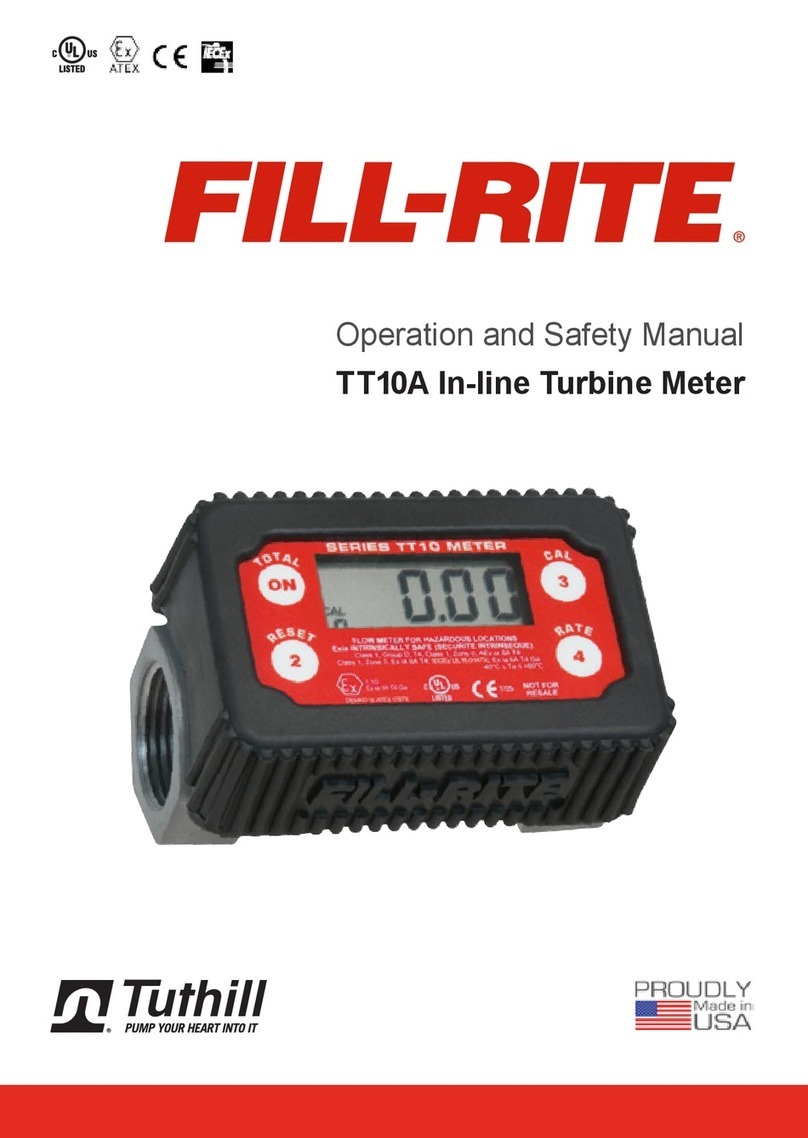
Installation:
Before Start-up of the Meter, make certain:
The meter is properly mounted, secured and piped
All shipping plugs are removed and lines are clean of all
debris.
All connections are tight and there are no leaks
All bleed and drain valves are closed
Do NOT smoke near the meter, or use the meter near
an open flame when metering flammable fluids. Fire or
explosions could result.
This meter is not intended for use with fluids for human
consumption.
Make sure that all necessary safety precautions have been
taken including proper clothing, personal safety equipment
and fire safety equipment if required.
Before shipment, protective thread caps were placed in the
meter and accessories openings for protection. They should
remain in place until your are ready to attach the piping.
The meter must always be securely bolted to a platform or
supporting member, regardless of the mounting position.
Never “hang” a meter on the connecting pipe.
Position the meter with service in mind. Provide ample work
space. Removing covers can be difficult when work space
is not available. Always supply a platform or support for the
meter mounting.
Prior to meter installation, the entire piping system should be
thoroughly flushed of all debris with a liquid that is compati-
ble with the construction of the meter.
Keep all external surfaces of the meter clean.
Positive displacement meters are designed to operate full of
liquid. The meter should be installed in a manner such that
it remains full of liquid at all times.
Install the companion flanges. Tighten to a position that
allows the meter to bolt to the companion flanges, free of
pipe stress. The meter should always be supported by bolt-
ing to a platform. Never use the connecting pipe as the
means of support.
It is recommended that a strainer be installed upstream of
each meter to prevent damage from foreign matter such as
weld slag, pipe scale, etc.
A means to calibrate and prove the meter should be provid-
ed during installation. An easy means for diverting flow into
a calibration vessel should be considered.
Operation Requirements:
Upstream lines must be maintained full to prevent air from
entering the meter. If the upstream or inlet lines are con-
structed in a manner which allows reverse flow, foot or back
check valves should be installed.
Underground tanks that are furnished with a submersible
pump will eliminate many problems that occur with positive
displacement pumps with suction pipes when the suction
piping is incorrectly sized creating too large a lift.
*** Install the Meter and Accessories in Compli-
ance with all applicable local, state and federal
construction, electrical and safety codes. Addi-
tionally, the LPG meter must be installed in ac-
cordance with the requirements of ANSI-NFPA 58
In critical installation, block valves and by-pass lines
are recommended. This allows the meter to be ser-
viced without interruption of flow in a critical process
application.
Thermal and or over pressure relief valves are recom-
mended and should be installed whenever it is possi-
ble to block the meter between two valves. Thermal
pressures many times the operating pressure are pos-
sible with only a small rise in temperature.
Hydraulic shock like thermal expansion can be harmful
to the meter components. Consideration should be
given to designing pumping and piping systems to
eliminate hydraulic shock.
4
Installation & Operation
WIRING
If the flow meter is part of a dispenser, please refer
to dispenser manufacturer wiring diagram.
If the flow meter is used as a ‘stand-alone’ dispens-
ing meter, please refer to:
Page for TS06A with ELNC register
Page for TS06A with EMR register
Page for TS06A used with other registers
